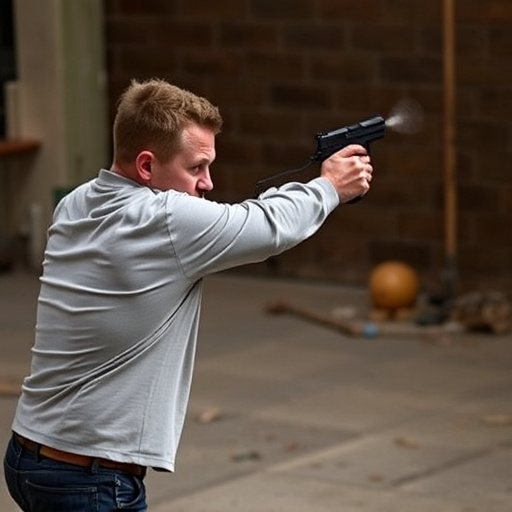This section provides a comprehensive guide to selecting the best police-grade stun guns, exploring various models for law enforcement and personal protection. Key features like voltage output, weight, size, durability, and legal considerations are highlighted, emphasizing the importance of understanding these factors for effective and safe use. The text delves into the differences between projectile and contact stun devices, with examples like Tasers and stun batons, catering to diverse tactical needs. Ultimately, it offers a tailored approach to choosing Police Grade Stun Gun Options that ensure optimal performance in high-pressure situations.
In today’s world, understanding stun weapons is crucial for personal safety and law enforcement applications. This comprehensive guide delves into the two primary types: projectile and contact stun devices. Projectile stun devices, such as stun guns and beanbag rounds, work by projecting force from a distance, while contact stun guns rely on direct contact to deliver a powerful electric shock.
Police grade stun gun options vary based on design, safety features, and legal implications. This article explores key factors in choosing between projectile and contact stun weapons, helping users make informed decisions tailored to their needs.
- Understanding Stun Weapons: A Basic Overview
- Projectile Stun Devices: How They Work and Their Applications
- Contact Stun Guns: Design and Safety Features
- Police Grade Stun Gun Options: Key Factors to Consider
- Legal Implications and Use Cases for Each Type
- A Comparative Analysis: Choosing Between Projectile and Contact Stun Weapons
Understanding Stun Weapons: A Basic Overview
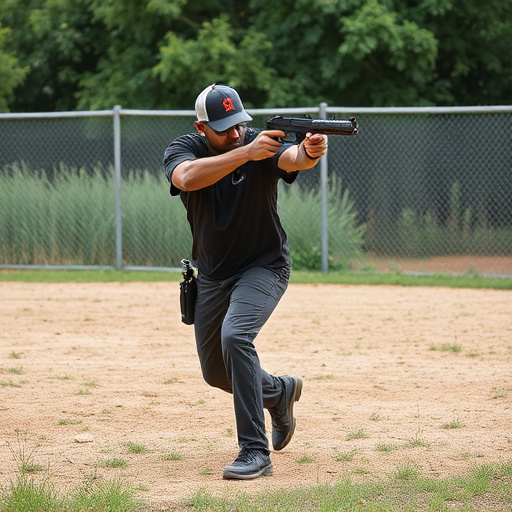
Projectile Stun Devices: How They Work and Their Applications

Contact Stun Guns: Design and Safety Features
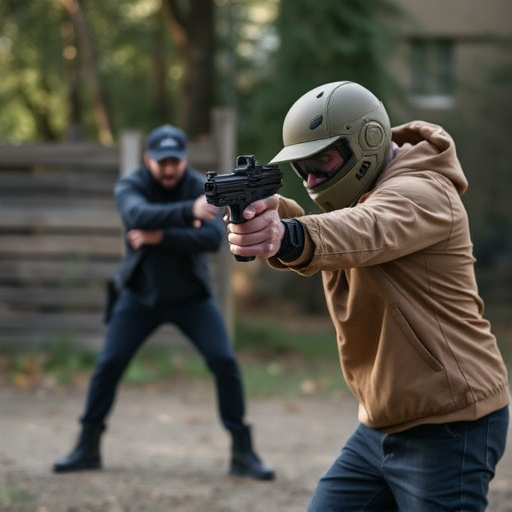
Contact stun guns, also known as electrostun weapons, are designed to incapacitate targets through electrical impulse rather than physical impact. These devices typically feature two metal probes that make contact with the target’s body, delivering a high-voltage, low-current shock. The current disrupts the target’s neuromuscular transmission, causing muscle spasms and temporary paralysis. Police grade stun guns are engineered for maximum effectiveness and safety, often incorporating advanced features like adjustable voltage settings, built-in flashlights, and durable construction to withstand harsh conditions.
Many modern stun guns come with safety mechanisms such as trigger locks and auto-shutdown features that deactivate the device after a certain amount of time or when the trigger is not pulled. These safety features ensure responsible use and minimize the risk of accidental discharges, making them popular choices for law enforcement agencies and personal protection enthusiasts seeking reliable police grade stun gun options.
Police Grade Stun Gun Options: Key Factors to Consider
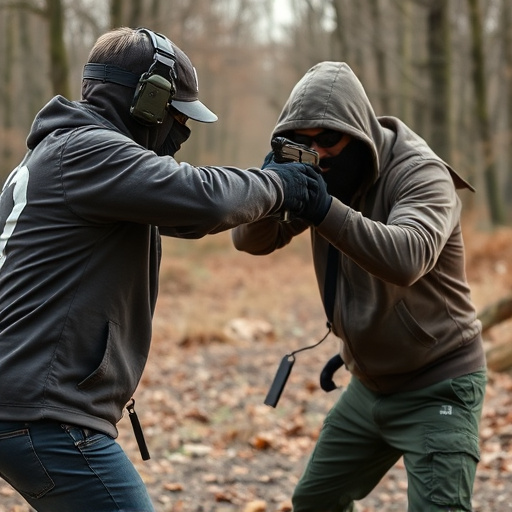
When exploring Police Grade Stun Gun options, several key factors come into play to ensure effectiveness and safety. Firstly, consider the stun gun’s power output, measured in joules—higher values generally imply stronger stun capabilities. This is crucial for neutralizing a subject swiftly, but also important to avoid causing excessive harm or injuries.
Secondly, weight and size are critical considerations for officers. A lighter, more compact stun gun enhances maneuverability during high-pressure situations, allowing quick deployment. Additionally, durable construction and weather resistance are essential features, given the potential for exposure to harsh environments during police operations.
Legal Implications and Use Cases for Each Type
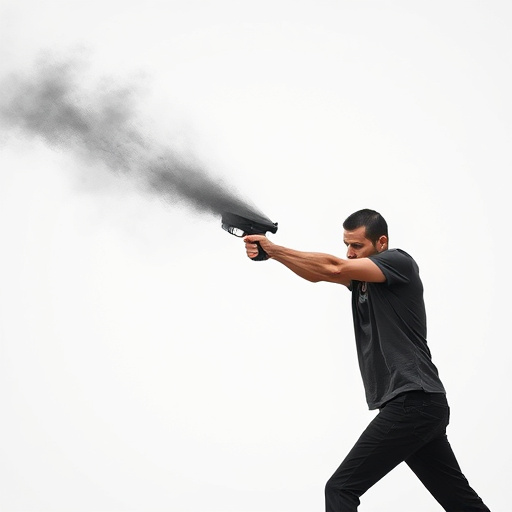
The legal landscape surrounding stun weapons varies significantly based on their nature—projectile or contact. In many jurisdictions, firearms, including stun guns, are tightly regulated and require specific permits, especially for non-law enforcement use. For instance, some regions classify stun guns as “firearms” due to their electrical discharge capabilities, mandating registration and background checks. On the other hand, contact stun devices like tasers typically face less stringent regulations since they don’t fire projectiles but rather rely on direct physical contact for activation.
Police grade stun gun options often fall under a different legal category than civilian models due to their advanced features and higher voltage outputs designed for law enforcement use. These weapons are strategically employed in high-risk scenarios where non-lethal force is necessary to subdue individuals without causing permanent harm. Use cases include crowd control during demonstrations, detaining dangerous criminals, or providing an additional layer of protection for officers in hostile environments. Legally, their deployment adheres to strict protocols and guidelines ensuring accountability and proportionate use of force.
A Comparative Analysis: Choosing Between Projectile and Contact Stun Weapons
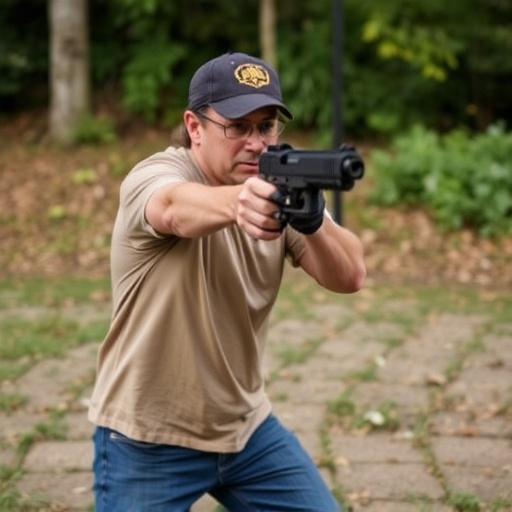
When considering stun weapons, law enforcement and personal protection enthusiasts often find themselves in a dilemma: choosing between projectile and contact stun devices. Each category offers unique advantages and applications, catering to diverse needs. Projectile stun guns, like Tasers, fire electrical probes that disrupt muscle control, providing a non-lethal force option at a distance. They are ideal for de-escalating volatile situations without close physical interaction. On the other hand, contact stun weapons, such as stun batons or electroshock shields, deliver an electric shock through direct contact. These devices offer immediate control and are effective in close quarters where projectile options might not be feasible.
The decision between these two types often depends on the user’s role and specific requirements. Police officers may prefer Tasers for their ability to disable suspects from a distance while maintaining officer safety. In contrast, personal protection professionals or individuals facing physical threats might opt for stun batons, ensuring they have direct control in close-range encounters. The availability of various Police Grade Stun Gun Options further enables users to select devices with specific features like power levels, range, and ergonomic design, catering to different tactical scenarios.
In the realm of personal safety, both projectile and contact stun weapons offer unique advantages as viable self-defense options. For those seeking a non-lethal solution, understanding the distinctions between these devices is key. Projectile stun devices provide a tactical edge with their range and ability to disable from a distance, while contact stun guns excel in close-quarters situations due to their direct impact and safety features. When considering Police Grade Stun Gun Options, factors like power, durability, and legal compliance play a crucial role. Ultimately, the choice depends on individual needs, whether for personal protection, security professionals, or law enforcement, ensuring a well-informed decision based on thorough research and understanding of local regulations.
